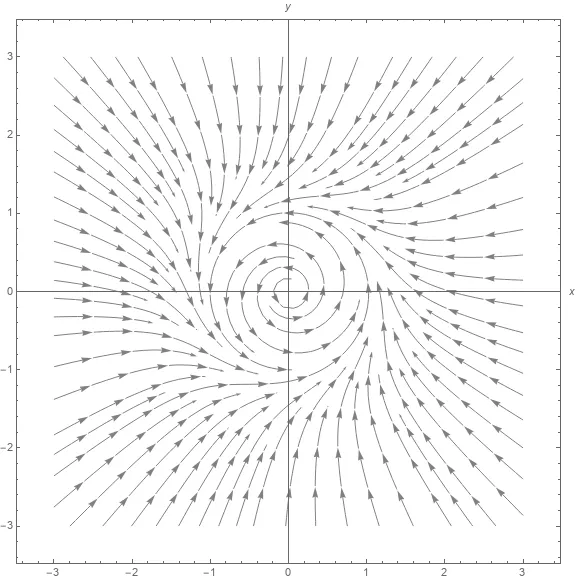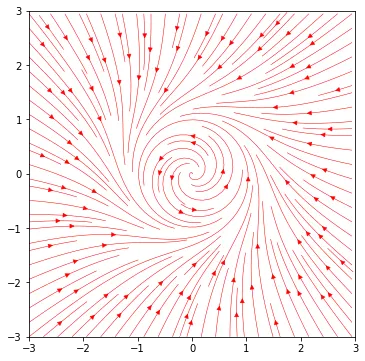我需要一个相图,展示以下非线性系统的极坐标形式:
\dot{r} = 0.5*(r - r^3) \dot{\theta} = 1
我知道如何在Mathematica中完成...
\dot{r} = 0.5*(r - r^3) \dot{\theta} = 1
我知道如何在Mathematica中完成...
field1 = {0.5*(r - r^3), 1};
p1 = StreamPlot[Evaluate@TransformedField["Polar" -> "Cartesian", field1, {r, \[Theta]} -> {x, y}], {x, -3, 3}, {y, -3, 3}, Axes -> True, StreamStyle -> Gray, ImageSize -> Large];
Show[p1, AxesLabel->{x,y}, ImageSize -> Large]
我该如何在Python中使用pyplot.quiver实现相同效果?


